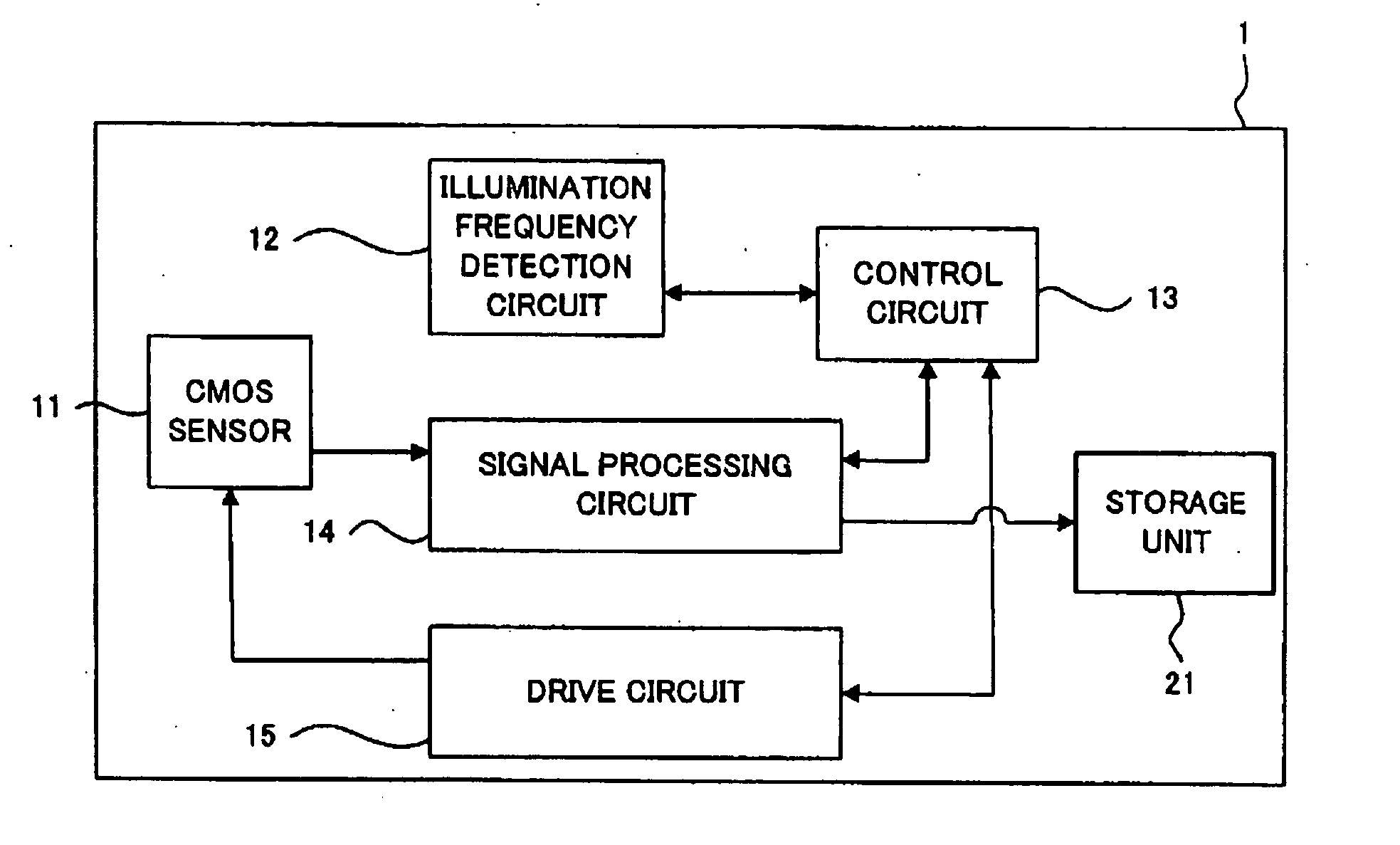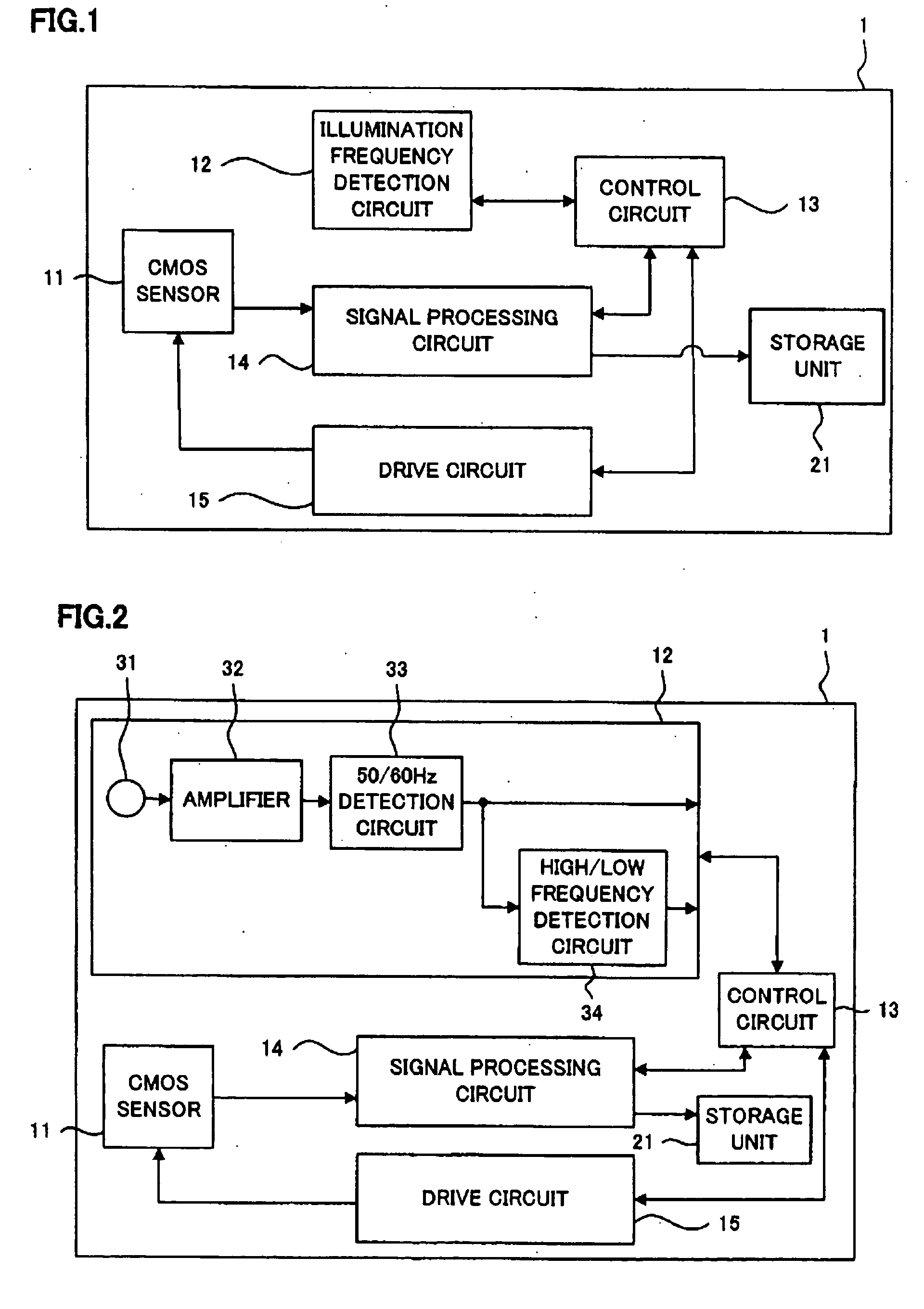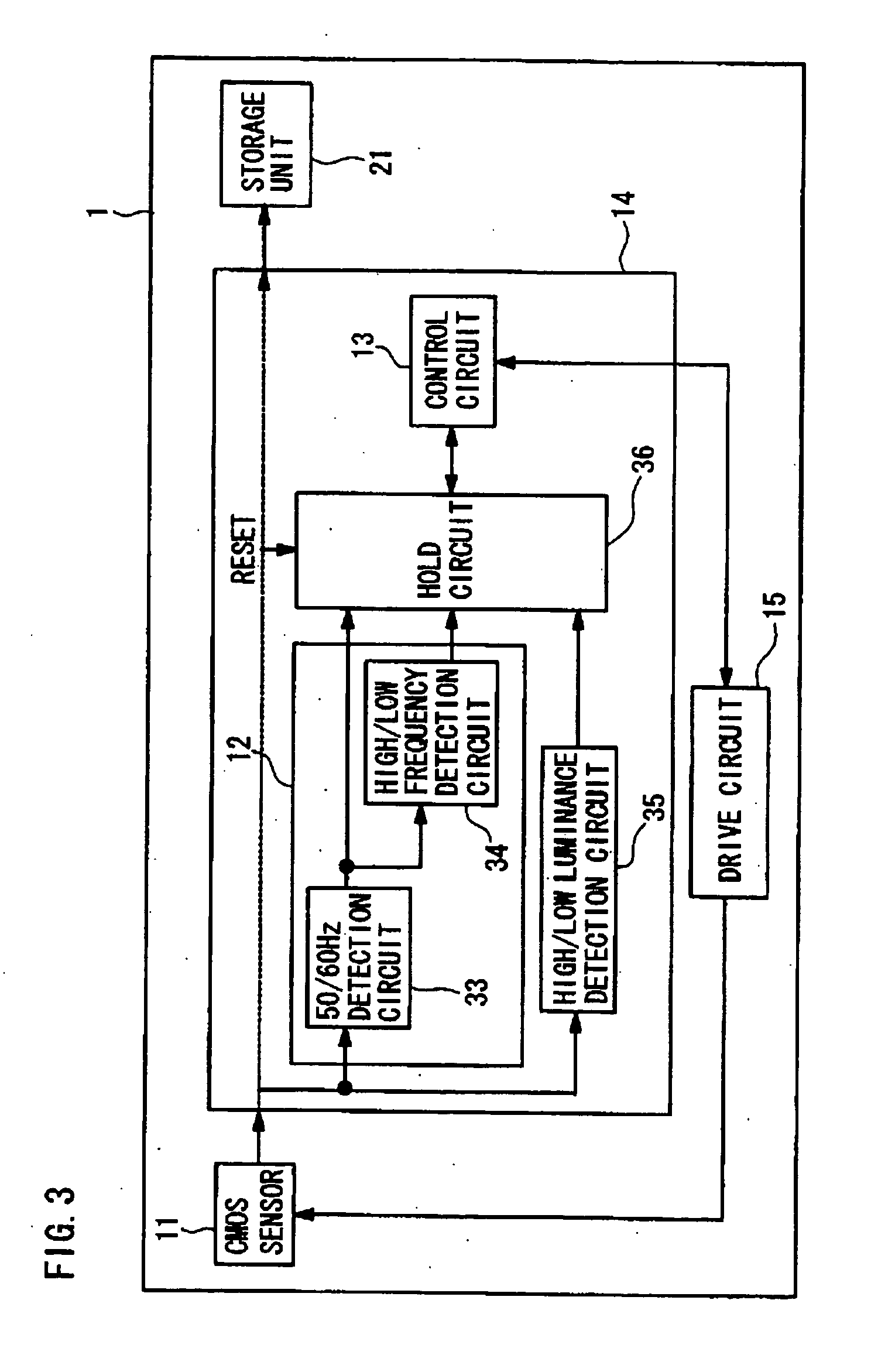Solid state imaging device
- Summary
- Abstract
- Description
- Claims
- Application Information
AI Technical Summary
Benefits of technology
Problems solved by technology
Method used
Image
Examples
Embodiment Construction
[0045] Embodiments of the present invention, as best mode for carrying out the invention, will be described hereinafter with reference to the drawings. The present invention relates to a solid state imaging device which can correct or significantly reduce level variation and flicker. It is to be understood that the embodiments described herein are not intended as limiting, or encompassing the entire scope of, the present invention. Note that like parts are designated by like reference numerals or characters throughout the drawings.
[0046]FIG. 1 is a schematic block diagram of an example of an electrical circuit of a solid state imaging device 1 according to the present invention. As shown in FIG. 1, the solid state imaging device 1 comprises a CMOS (Complementary Metal Oxide Semiconductor) sensor 11, an illumination frequency detection circuit 12, a control circuit 13, a signal processing circuit 14, a drive circuit 15 and a storage unit (memory) 21.
[0047] The CMOS sensor 11 is an ...
PUM
 Login to View More
Login to View More Abstract
Description
Claims
Application Information
 Login to View More
Login to View More - R&D
- Intellectual Property
- Life Sciences
- Materials
- Tech Scout
- Unparalleled Data Quality
- Higher Quality Content
- 60% Fewer Hallucinations
Browse by: Latest US Patents, China's latest patents, Technical Efficacy Thesaurus, Application Domain, Technology Topic, Popular Technical Reports.
© 2025 PatSnap. All rights reserved.Legal|Privacy policy|Modern Slavery Act Transparency Statement|Sitemap|About US| Contact US: help@patsnap.com



